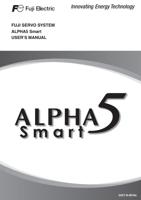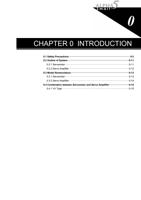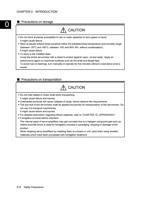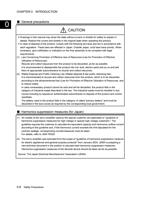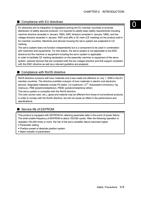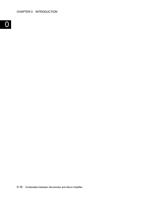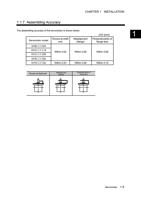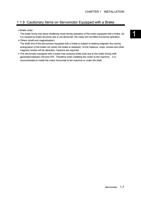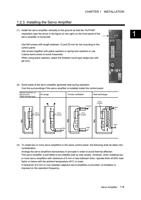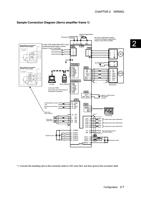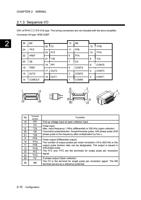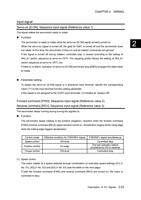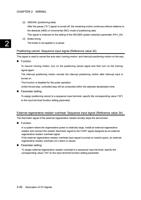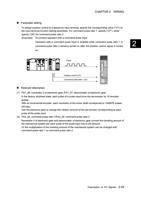
CHAPTER 2 WIRING
Torque control: Sequence input signal (Reference value 38)
Use to conduct torque control in the extension mode.
This function is enabled only if "6" (extension mode) is selected for parameter PA1_01.
Function
Turn on to conduct torque control in the extension mode (mode compatible with that of
conventional α Series).
2
The servo amplifier is in the torque control mode while the torque control signal assigned to a
CONT input signal remains turned on.
The torque of the output shaft of the servomotor can be controlled.
The torque is actually output while the forward command [FWD] or reverse command [REV] signal
remains turned on.
The torque command value depends on the input voltage applied to the TREF terminal. (Refer to
the table below.)
The direction of rotation varies between the forward command [FWD] and reverse command [REV]
signals.
Voltage applied to TREF terminal Output torque (rated torque 100%)
±3 V
±100% *
* PA3_33: If the torque command scale value is the default value.
Parameter setting
To assign torque control to a sequence input terminal, specify the corresponding value ("38") to the
input terminal function setting parameter.
Relevant description
(1) Maximum rotation speed
If there is no load connected to the servomotor, the rotation speed is subject to a limitation on
PA1_26 (maximum rotation speed (for torque control)) with a variation of about ±100 r/min (due to
lack of speed control).
The speed limit can be selected with the setting of PA2_56 (speed limit selection at torque control).
VV type: input voltage of speed command [VREF] terminal, multi-step speed setting
(2) Torque setting filter
A filter can be set to the input voltage applied to the torque command [TREF] terminal with the
setting of PA1_60 (torque setting filter).
(3) Torque command scale/offset
The scale and offset of the input voltage applied to the torque command [TREF] terminal can be
adjusted, using PA3_33 (torque command scale) and PA3_34 (torque command offset).
Description of I/O Signals 2-47

